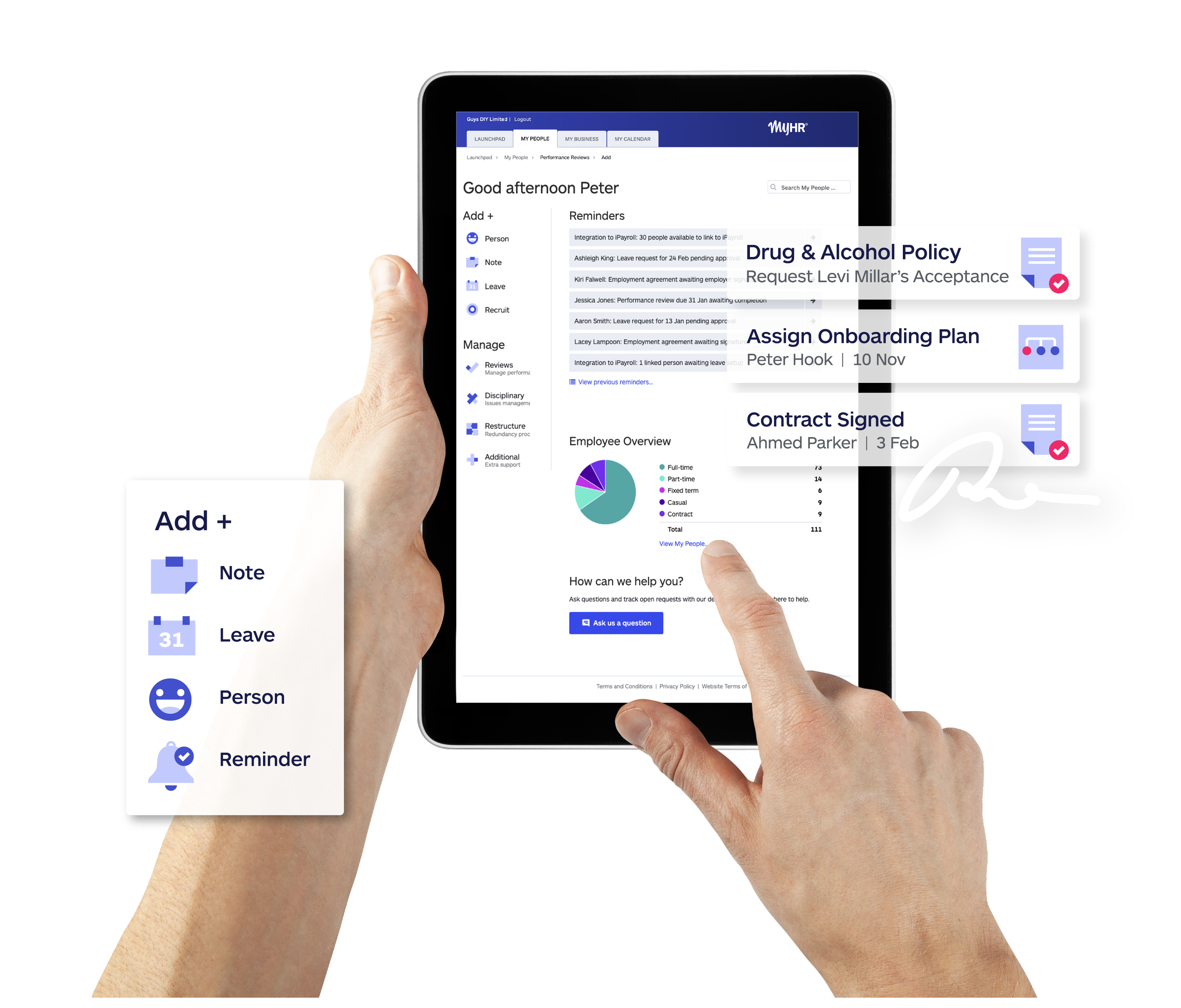At MyHR, we’re frequently asked this question, and it’s clear there’s often confusion about the differences between independent contractors and employees in Canada.
Employees and contractors each offer unique advantages and disadvantages to employers. For example, you may want to manage uncertainty by avoiding long-term commitments to employees or have a need for skilled contractors for a specific project. In both of these scenarios, hiring an independent contractor would be advantageous.
Alternatively, you might want the stability of having an ongoing commitment from employees, or wish to avoid higher contractor rates by handling work in-house.
Similarly, individuals might prefer contracting for its flexibility or perceived tax benefits, or they may agree to a contracting relationship to secure work, even stating they’re “okay with waiving employment rights.”
However, it’s not simply up to the worker or the employer to decide. In Canada, the actual nature of the working relationship determines whether someone is an employee or an independent contractor. Getting this wrong can expose your business to significant legal and financial risks under both employment standards and tax laws.
Recent rulings in Canadian courts demonstrate the risks of misclassifying workers. For instance, cases have resulted in businesses being required to pay back wages, unpaid vacation pay, or other entitlements when contractors were later deemed employees. Misclassification can also lead to penalties from the Canada Revenue Agency (CRA), such as assessments for unpaid CPP contributions, EI premiums, and tax withholdings.
Key differences between employees and contractors
Understanding the difference between employees and contractors is essential. Here's a practical guide to help minimise risks to your business.
Employees
- Employees work under an employment relationship (“contract of service”), typically formalized in an employment agreement.
- Employers control what the employee does, set their hours, and usually require them to work primarily for the organization.
- Employers provide tools and equipment, direct how the work is done, and require employees to request time off.
- Employees are paid through payroll, with automatic deductions for income tax, CPP, and EI.
- They are entitled to statutory benefits such as vacation pay, sick leave, and parental leave under federal or provincial employment standards laws.
- Employers are responsible for maintaining employment records, including agreements, pay, and hours worked.
- Any significant changes to the employment relationship (e.g., duties, pay, or location) must involve consultation and mutual agreement.
Employees often fill key roles within an organisation, especially those requiring ongoing commitment and loyalty.
Independent contractors
- Contractors work in a commercial relationship (“contract for service”), delivering outcomes for clients on their own terms.
- They are typically self-employed, working for multiple clients and controlling their schedules.
- Contractors use their own tools and equipment and choose how and when to perform the work.
- They invoice for their work, pay their own taxes, and are responsible for their own CPP and EI contributions (if applicable). Contractors earning $30,000 or more annually must register for and collect GST/HST.
- Unlike employees, contractors are not entitled to benefits under employment standards laws, such as paid vacation or sick leave.
It’s less common for contractors to fill senior or long-term roles in an organization. They are typically engaged for specific projects or highly specialized tasks.
Tests to differentiate employees from contractors
There are several practical tests you can use to assess the true nature of a working relationship.
1. Control and independence
Q: Does the individual decide how and when to complete the work, or does the employer set these terms?
A: If the employer exercises significant control over the worker, they are more likely an employee.
2. Termination
Q: Can the working relationship end abruptly without formal notice or process?
A: If the worker expects ongoing work and would feel aggrieved if dismissed without notice, they are more likely an employee.
3. Leave
Q: Does the individual determine their own time off, or must they request and receive approval?
A: If time off must be approved, this indicates an employment relationship.
4. Financial risk and tools
Q: Does the worker invest in their tools and equipment, or does the employer provide them?
A: Contractors bear financial risk and are responsible for their operating expenses, whereas employees typically do not.
What are the penalties for misclassifying workers in Canada?
Misclassifying workers can lead to significant penalties under both employment and tax laws. Employers may be required to retroactively pay:
- Unpaid wages, vacation pay, and other entitlements under employment standards legislation.
- Back taxes, CPP contributions, and EI premiums owed to the CRA.
Additionally, fines or penalties may be imposed by provincial employment standards agencies or the CRA.




